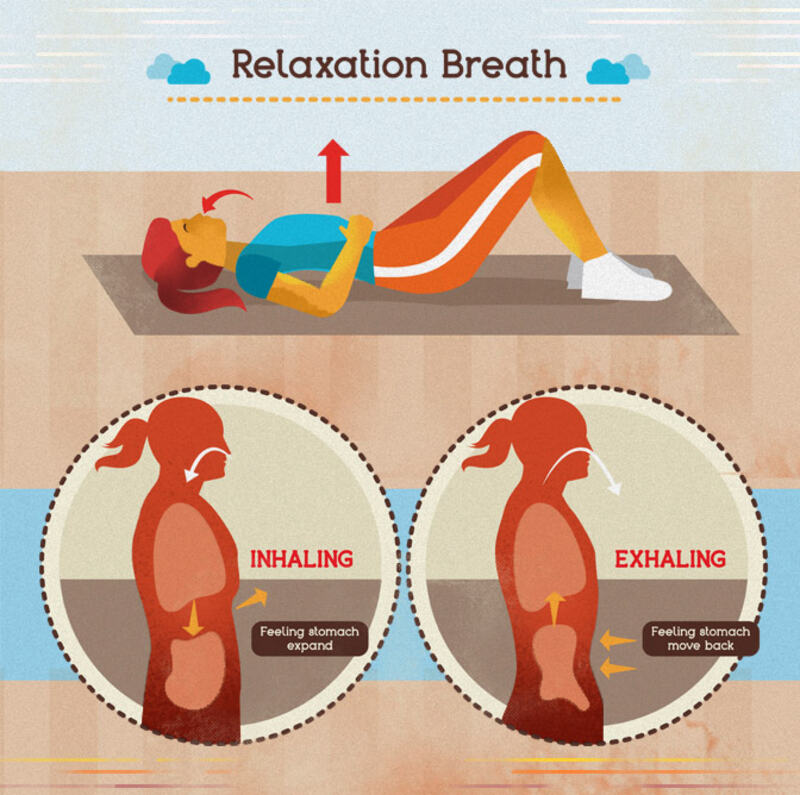Unlocking the Benefits of Stretching
Dec 31, 2023 By Madison Evans
Often, exercise enthusiasts overlook the post-workout stretching importance, integrating this routine into your fitness regimen, however, can significantly enhance it. In this article, we will delve into exploring systematically the manifold benefits of exercising after a stretch and underline its crucial role in enhancing your overall fitness journey.
Enhancing Flexibility for Optimal Performance
Flexibility - The Cornerstone of Fitness
Strength and endurance often overshadow flexibility. However, it assumes a crucial role in overall fitness. Engaging with post-workout stretching. This not only maintains your flexibility but also enhances it. This is a vital step to ensure that muscles and joints operate through their complete range of motion.
The resulting increased flexibility brings about manifold benefits such as improved athletic performance, and reduced risk of injury, thus augmenting functional movement.
Dynamic vs. Static Stretching
Explore the dynamic realm of stretching techniques, particularly emphasizing pre-workout warm-ups with controlled movements known as dynamic stretches. On the other hand, allocate your post-workout period primarily to static stretching.
This involves holding each stretch for an extended duration. It is indeed a crucial part of optimizing flexibility and preventing muscle soreness. This promotes muscle relaxation, alleviates tension, and aids in the elongation of muscle fibers.
Post-Workout Flexibility: A Catalyst for Recovery
The Role of Stretching in Recovery
Exercise initiates muscular stress, which in turn generates microtears that activate the body's repair systems. Post-workout stretching accelerates this recuperative process. Stretching, by enhancing blood flow to tired muscles, conveys vital nutrients and oxygen. This is a facilitation that promotes faster restoration while diminishing muscle soreness.
Fascial Stretching
Examine the fascial system, a complex network of connective tissue that enshrouds muscles. Targeting this system with specialized fascial stretching techniques promotes elasticity and alleviates stiffness. If you integrate these stretches into your post-workout routine, it can potentially enhance mobility while reducing the risk of injury.
The Key Components of Exercise Recovery Stretching
Targeted Muscle Stretching
Craft a stretching regimen that specifically targets the muscles employed in your workout. Emphasize major muscle groups such as the hamstrings, quadriceps, calves, and upper body. By integrating precise stretches, you guarantee comprehensive recovery. Concurrently, mitigating imbalances that might culminate into injury over time.
Breathing Techniques for Relaxation
Incorporate mindful breathing into the routine of stretching you engage in after a workout. Deep, controlled breaths not only foster relaxation but also aid in releasing muscle tension. This methodical approach enhances your stretches' efficiency, providing mental cooldown, and thus contributes significantly to overall post-exercise well-being.

The Science Behind Exercise Recovery Stretching
Muscle Fibers and Stretching
On a microscopic level, physiological dimensions of stretching influence muscle fibers--promoting realignment and reducing stiffness.
By understanding the specific impacts that various stretches have on these muscular threads, you can then empower yourself to tailor your post-workout routine for maximum benefits.
Neuromuscular Facilitation
Engage with the concept of neuromuscular facilitation as it is a technique amalgamating stretching and contraction to enhance flexibility. By involving your nervous system in the stretch, you can attain more profound range-of-motion gains and learn to integrate these advanced methods into your routine for optimal results.
Crafting Your Perfect Post-Workout Stretching Routine
- Individualized Approach to Stretching
Acknowledge the diversity encompassed by body types and fitness objectives. Consequently, construct a bespoke post-workout stretching routine that addresses your unique needs, limitations, and even preferences.
To ensure optimal efficacy, consult with either professional be it a physiotherapist or fitness expert to customize an ideal stretching regimen conducive to your exercise program.
- Consistency is Key
Emphasize the crucial role consistency plays in maximizing post-workout stretching's benefits. Establishing and faithfully adhering to a routine bolsters flexibility. It aids recovery, is an integral part of any exercise program, and contributes significantly towards achieving long-term fitness goals.
Indeed, consistency isn't merely a key. It's the master key that unlocks the full potential for post-exercise stretching.
The Consequences of Skipping Post-Workout Stretching
The fervor to skip post-exercise stretching can be strong when completing a challenging workout. Yet, this crucial aspect of your fitness routine demands attention. Neglecting it may yield notable consequences on the short-term recovery and long-term well-being you hold dear.
1. Increased Muscle Stiffness and Tension
If you skip post-workout stretching, your muscles persist in a contracted state. This leads to escalated stiffness. When you neglect the elongation effect of stretching, tension accumulates, thereby contributing to a feeling of tightness.
Over time, unrelenting muscle tightness impedes flexibility. It hinders range-of-motion and elevates injury risks even further.
2. Delayed Recovery and Persistent Soreness
Delayed onset muscle soreness (DOMS), commonly referred to as post-exercise soreness, constitutes an intrinsic element of muscular recuperation. Skipping the subsequent stretching routine could intensify this condition and prolong one's discomfort.
By fostering blood circulation, a process that eliminates metabolic byproducts while supplying vital nutrients for effective recovery, stretching aids in alleviating muscle soreness.
3. Compromised Flexibility and Range of Motion
Flexibility, a dynamic attribute, demands constant attention and maintenance. Regular post-workout stretching is crucial. Without it, your muscles might progressively lose their optimal stretch and contract capacity.
This compromise in flexibility may constrict your range of motion: thereby impacting the efficacy of workouts, and elevation vulnerability to injuries during subsequent exercises.
4. Increased Risk of Injury
Post-workout stretching primarily functions to prevent injuries. Skipping this crucial step leaves your muscles in a fatigued, contracted state. If you engage in subsequent physical activities without proper elongation.

The risk of strains, sprains, and other injuries escalates significantly. Acting as a protective measure, stretching prepares your muscles and joints for the future demands of workouts.
5. Impaired Circulation and Muscle Recovery
After exercising, the vital role of blood circulation is to transport oxygen and nutrients to muscles that have become fatigued. This process is enhanced by stretching which aids in eliminating metabolic waste products.
Neglecting stretching compromises this circulation. It hinders the body's innate recovery mechanisms. A longer recovery period may ensue from this, thereby impeding your capacity to perform optimally in subsequent workouts.
To conclude, one must not simply view post-workout stretching as a mandatory task to complete after exercising. Instead, it forms an integral part of any comprehensive fitness strategy. If you choose to accept its numerous advantages, comprehend the scientific principles behind it, and devise your unique regimen, then you will be able to enhance exercise recovery dramatically improve flexibility, and set out on the path towards peak physical condition.
Incorporate these findings into your routine for optimal health benefits and observe firsthand how powerful incorporating post-workout stretches can be in transforming your exercise experience.








